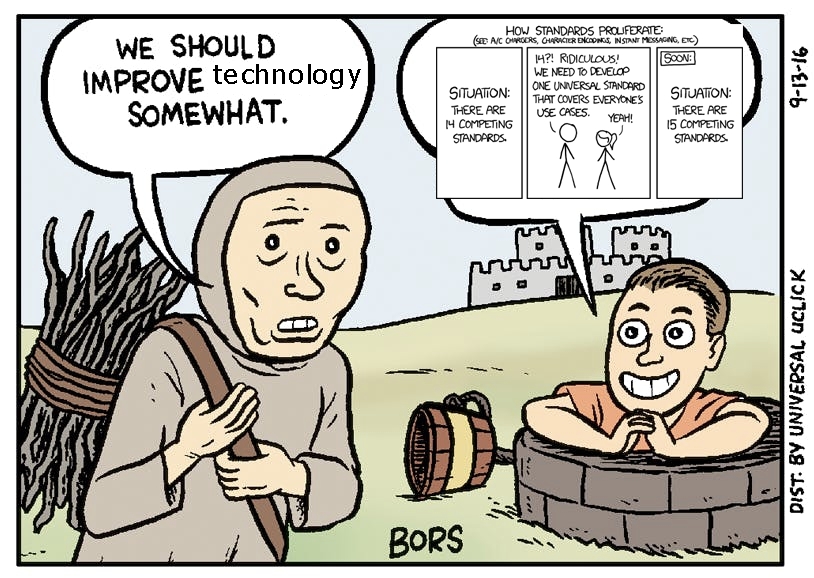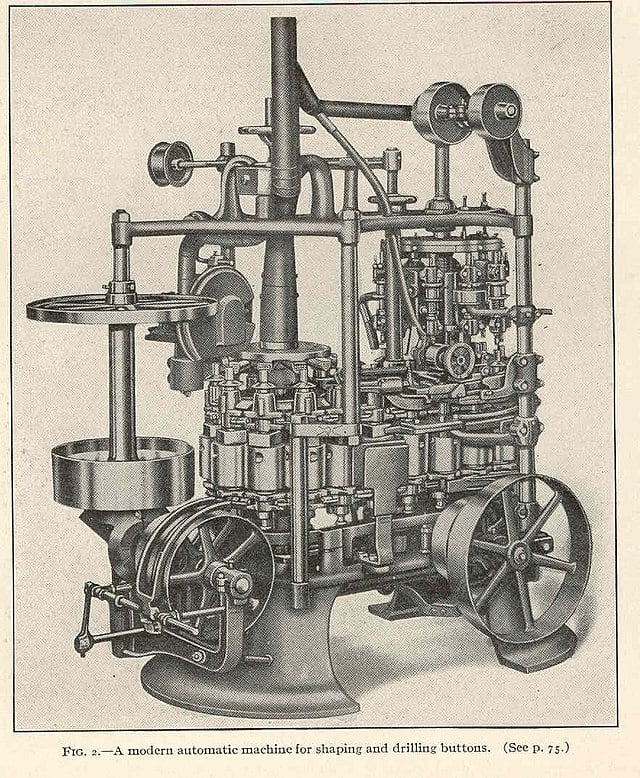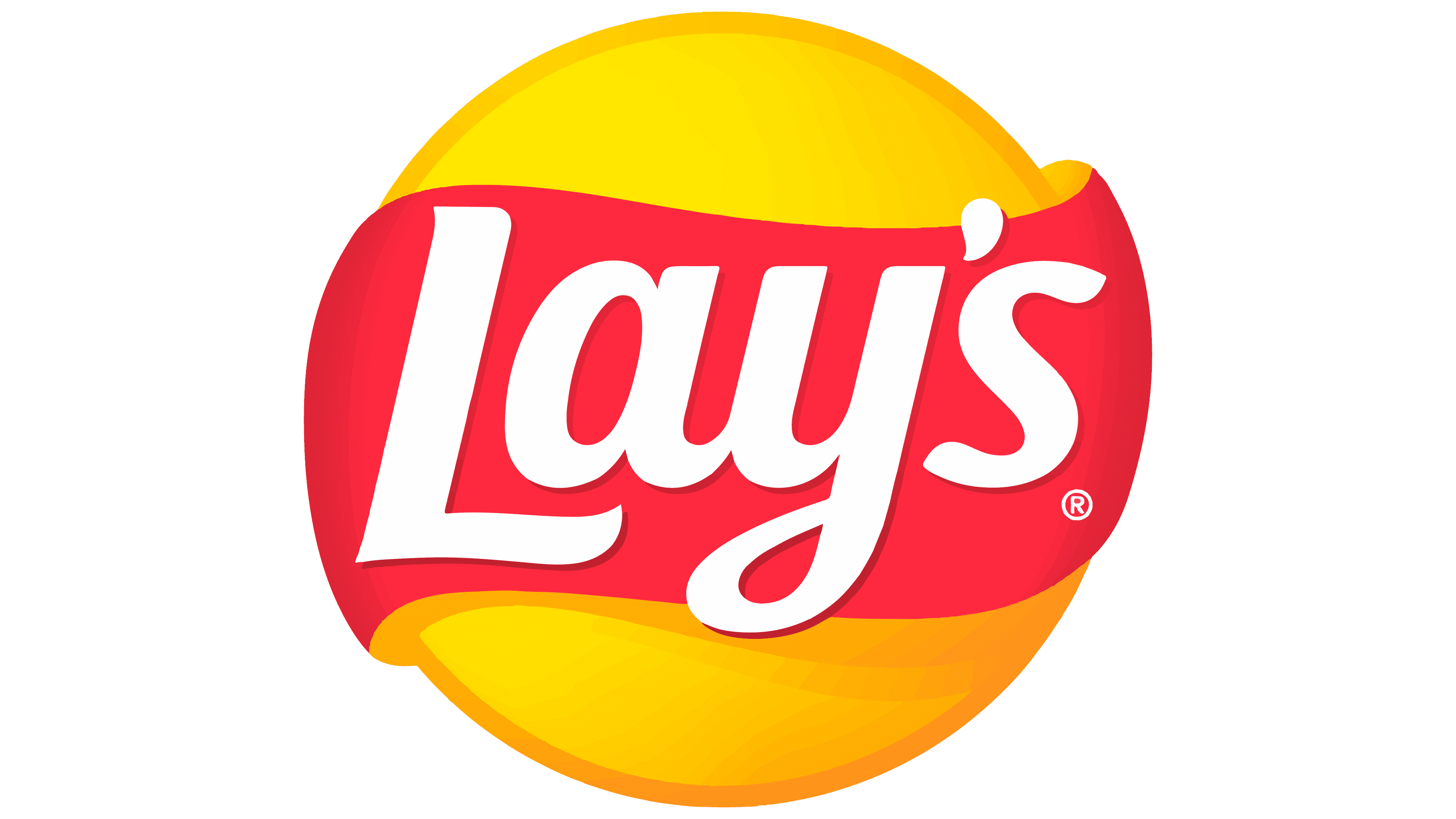Email, as far as im aware there isn’t some alternative email standard (messaging services, whatsapp, signal, sms, etc do not count imo as I believe they serve a different purpose than email)
DNS, while there are alternative root servers, they still fundamentally rely on the dns protocol.
TCP/IP, when the internet was first starting, this was not the only standard in use, but now it is (to my knowledge).
I thought about this for longer than I should’ve for a comment on a random post, but this is all I could think of lol.
edit: grammar
deleted by creator
Ah, I shouldve been more clear. I didnt just mean tcp specifically, I meant IP as a whole, for an example of a competing standard see x.25.
Funny enough, that wikipedia article mentions that x.25 is still in use by the aviation industry, and after a quick search it seems it is! So I guess Im still wrong lol.
You can probably throw Ethernet in there as well then, unless there’s anyone out there rocking a Lemmy instance on token ring…
I remember token ring settings in our family Mac in the early 90s. We eventually got broadband and my carpenter dad wired the house for Ethernet in around 98. He was cool dad at the time and way more tech savvy than anyone expected.
ARCnet forever!
Ipv4 vs ipv6 🫠
deleted by creator
TCP/IP is not the same as TCP, and UDP/IP doesn’t exist
Wat.
deleted by creator
You’re saying I’m wrong?
Id consectetur dolore eiusmod culpa.
We also have I2P now.
that’s a different layer, it’s not transport but a network protocol. it “competes” with IP
deleted by creator
Id consectetur dolore eiusmod culpa.
Toilet paper rolls.
Somehow we settled on a pretty good size for toilet rolls, and there never seems to be a compatibility issue with holders.
At least not for households. Commercial products have their own things going on, but it doesn’t affect most people.
Is there a formal standard, or did we decide not to mess with good enough?
We’ve got a 100 year old toilet roll holder, the spindle was turned on a lathe and the wooden cutout it sits in was hand carved. It is a poor fit for modern high sheet count rolls. We can’t stand to get rid of it so we just leave the roll outside of it until it is small enough to fit.
I have a half-bath with a modern holder. When that roll is 75% consumed, I move it to the bathrooms with the older style.
I like how you roll.
When one roll is empty, have you considered rolling half of a new roll onto it?
That sounds like a lot of fiddly work. Just sit a new roll on the back of the tank and use it until it fits.
What’s the width like? Consistent with modern rolls, or no?
Correct, width is the same. It can’t handle the diameter of modern jumbo rolls.
You could always buy smaller rolls. Someone must, since they still exist
My girl makes that decision and wants to keep the holder as well.
You’re a machinist! Can’t you just like…make a better one? /s
I actually have a wood lathe and all the other tooling to make one, not that I would.
I’ve been fixing the place up since August. It’s a farm that hasn’t been properly maintained in about 20 years.
I’m doing my best to build to the standard of the original owner and his son with modern materials and methods. It’s a humbling experience. Nothing is quite square but everything is built like it’s bomb proof. You couldn’t afford to build out of solid wood like they did. The joints and meets are also super tight, you can’t get a sheet of paper between roof boards on the barn in most places.
This is a cool one I haven’t thought of before!
USB has worked pretty well IMO
Yeah just don’t pay too close attention to the unofficial power delivery protocols.
or the cursed double ended USB-A cables
My main complaint about USB is the cables. There’s no way of knowing what standards and data speeds the cable may support.
They’ve now, at least, released a standard set of markings. Basically, the data speed in Gb and the power capacity in Watts will be printed on the connector. Whether chinese suppliers will bother complying is another matter.
Your typo makes your comment really confusing because it means the opposite of what you meant to write.
Edited to fix. 👍
“looks inside” meme with the “oh. oh no” meme spliced onto the end
USB , mini USB, type C USB, iphone bs, do those not count?
Not compared to what we had before usb
It used to be 100% proprietary for everything
USB-C is the latest standard. Try buying a phone, mouse or headphones swith mini USB these days.

There are many, I think. Like what other people have mentioned, sometimes the new standard is just better on all metrics.
Another common example is when someone creates something as a passion project, rather than expecting it to get used widely. It’s especially frustrating for me when I see people denigrate projects like those, criticizing it for a lack of practicality…
The competing standards problem is mostly a problem of not actually talking to stakeholders. Most of these “universal standards” don’t cover some rare, specific, but very important, use cases.
The way I see it, it’s not so much an issue of making something that’s better than the other standards. It’s really about getting your standard into actual use and hitting critical mass which makes all the other standards irrelevant.
see also: NACS (yep that’s a Tesla plug in a standards agreement)
Yeah. No standard covers all use cases. It’s just best to have one standard that makes a lot of compromises.
When the standard is a big interoperability push that leverages MORE functionality as a bribe to be implemented.
This is how USB (plug & play!), Bluetooth (wireless headset!), HDMI (high def, single cable!) , and USB-C (both sides are good!) all beat the entrenched pseudo standards.
You can avoid the issue when a government just mandates one standard, ideally after consulting with experts on which is the best.
See: USB, SCART, etc.A lot of people seem to be opposed to this argument, seeing it as a kind of government overreach, but I think it can work if done correctly. Things like USB and HDMI are already governed by collectives of companies, I think having the government work together with them can be beneficial for both consumers and producers alike.
obligatory DisplayPort > HDMI
Cries in CEC.
Sometimes the regulators sit back and see how the market is pushing, then regulate it to reduce waste. EV chargers for example.
USB-C is a total failure though. Switching voltages, extremely high currents, expensive cables, fickle connectors, …
non standard conforming cables, and connectors, plus the entire mess of it supporting anything from power only, to usb 2, to usb 3, to thunderbolt 3, to thunderbolt 4? and usb 4.0 now.
It’s an utter fucking disaster of a shithole.
MIDI.
Before the 80’s, there was no standard interface to control electronic instruments, just a bunch of proprietary interfaces unique to each manufacterer. But in 1983, amazingly they actually standardized on MIDI, and it remains a useful standard to this day, with any new versions of MIDI being completely backwards compatible, so your Yamaha DX7 from the 80’s is still just as viable to use today as the day it was new!
DMX is a similar protocol for lighting.
Sure, there’s artnet and sacn, but most gigs still use good old DMX.I hate to tell you this but DMX passed away in 2021
This really is a perfect example. I did a lot of MIDI things as a kid!
Should mention Open Sound Control which is also pretty good. Not exactly a competitor, it was supposed to provide a richer, real time interface. Still popular for certain use cases, including beyond music.
Whenever the new standard hits the almost impossible golden triangle of “cheap, reliable, and fast”.
It’s gotta be cheaper than the alternatives, better and more reliable than the alternatives, and faster/easier to adopt than the alternatives.
Early computers for example had various ways to chug math, such as mechanical setups, relays, vacuum tube’s, etc.
When Bell invented their MOSFET transistor and figured out how to scale production, all those previous methods became obsolete for computers because transistors were now cheaper, more reliable, and faster to adopt than their predecessors.
Tbf though transistors are more of a hardware thing. A better example of a standard would be RIP being superceded by BGP on the internet.
Tbf though transistors are more of a hardware thing. A better example of a standard would be RIP being superceded by BGP on the internet.
another big example is the telecom companies being superseded by IP based networking, rather than whatever patch routing bullshit was previously cooked up.
Sometimes certain solutions are just, better.
Light bulb sockets are the same all over. RJ-45 Ethernet, USB-C, Bluetooth, WiFi, TCP, HTTP, HTML, CSS.
While light bulb sockets don’t change much from region to region, they definitely aren’t all the same. For the bulbs (not the bars), there’s two large categories: Edison screws and bi-pin. Edison screws also come in a lot of sizes. When compact fluorescents were rolling out, they got a new bi-pin connector from the USA: GU24. My whole home has GU24 fixtures (not by my own choice), but my lamps are Edison screws.
GU24 is wack, especially for home lighting. I think they aren’t made much anymore.
It was a pain to find gu24, I had to order them online for two rooms
Thank you for teaching me how to replace my porch light (ONLY MY PORCH LIGHT?!?!) that’s been out for over a year. I tried to pull the bulb out and it shattered in my hands. I was like WTF is this shit? Haven’t touched it since.
Include car cigarette lighter power ports
It seems a lot of sites these days are actively hostile towards the HTML-CSS combo.
What do you mean? Do you have any examples?
Not really. I guess Google search requires JavaScript now.
HTML CSS and JavaScript each having different syntax is stupid and I will die on that hill.
Just use React or something, you can use a single syntax for all three. It makes total sense why the syntax is different if you think about when and why they were made. We had HTML for years before CSS, and it was longer still until we got JavaScript. Each language has a different purpose, so naturally a different syntax makes sense. Your hill is poorly defended.
In that case on general programming language should have taken over instead of trying to merge all three. Especially CSS, which in its infinite intelligence decided to use the minus operator instead of underscore, is completely out of place. Everything is jank and you can tell it has been patched together with duct tape.
Idk, I like CSS, but I come from a web development background. Modern JS (ES4+) is fully capable of replacing CSS using the style property.
JSX is sort of like a singular language to do all three.
HTML isn’t perfect, but I can’t think of a better language for writing documents. TEX is unintuitive, PDF is opaque, markdown is just HTML shorthand.
Networking standards started picking winners during the PC revolution of the 80’s and 90’s. Ethernet, with the first standards announced in 1983, ended up beating out pretty much other LAN standard at the physical layer (physical plugs, voltages and other ways of indicating signals) and the data link layer (the structure of a MAC address or an Ethernet frame). And this series of standards been improved many times over, with meta standards about how to deal with so many generations of standards through autonegotiation and backwards compatibility.
We generally expect Ethernet to just work, at the highest speeds the hardware is capable of supporting.
networking standards were a mess before ethernet really fucking cooked with twisted pair wiring.
Ethernet had already existed for a little bit prior to this, and most other alternatives were actively being worked on at the time, and relatively similar to ethernet, save for the general technical implementation, token ring as opposed to the funny broadcast meta. But when ethernet was able to just barely get ahead and use twisted pair, the entire thing came crumbling down and everyone agreed that ethernet over twisted pair, with switched star topology was the best.
What’d twisted pair bring to the table? Noise reduction?
three primary things.
Fucking coax, literally the bane of anybody anywhere, fucking horrible standard. Works well, which is the only reason anybody uses it, it’s just a nightmare. (if you have ever dealt with a coax cable, you know exactly what i mean)
Offices were already wired up with phone lines, which often had redundant lines running to each endpoint, meaning you could just hook straight into the existing wiring infrastructure, and convert it to ethernet (very accessible and cheap)
twisted pair comes with the advantage of noise reduction over longer distances, cheaper construction, and significantly simpler wire structure, making it easier to route, manage, terminate, and just generally exist around. (basically the same as the first one lmao)
It was actually so much of a problem, that the original ethernet standard, based on RG-6? I think, don’t quote me on it, ended up moving to a smaller coax standard and was referred to as “thinnet” as it was thinner coax and easier to work with.
UEFI boot mode
Anything by Sony
Not exactly this, but it reminds me of my first job. I used to work in finance, and I was given the task of automating cash flow reports that were sent out to hundreds of clients.
The problem was that they were made manually in Excel, and most of them were unique. So every couple years they’d get a bunch of smart people in a conference room, and tell them to figure out how to automate the cash flows. The first step was always to create a standard cash flow template, and convince everyone to adopt it.
Some users would adopt the new template, but most of them would say that the client didn’t like it, so they’d stop using it and the project would fall apart.
By the time I got there, there were still hundreds of unique cash flows, but then there were a few dozen that shared the same handful of templates, like a graveyard of failed attempts to automate this process.
I just made the output customizable. The reports looked the same as what the client was used to, but it saved hundreds of man hours for the users. A lot of people got laid off.
There are a lot and in most cases you’ll notice when dealing with Americans, who are refusing to do stuff like the rest of the world. The meter and kilogram took over from hundreds of different measurement standards. Most of the world is using the same calendar and writes dates in the same way. Most countries are driving on the same side. Traffic signs are kind of the same worldwide. You can buy screws with the same standard everywhere.
I see this one quoted a lot when discussing Lemmy communities migration/consolidation/split.
I don’t think it really works that well for forums. Some communities have clearly taken over others (see !onehundredninetysix@lemmy.blahaj.zone vs !196@lemmy.world recently). It’s not standards competing, it’s people going where the activity happens.




















